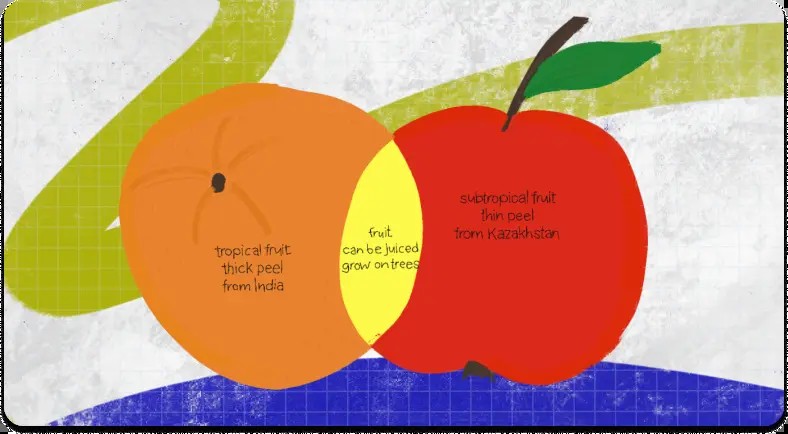Compare and contrast essays analyze the similarities and differences between two or more subjects. These subjects typically belong to the same category, allowing for meaningful comparison. This guide provides a comprehensive framework for crafting a compelling compare and contrast essay outline, ensuring a well-structured and insightful analysis.
Brainstorming and Developing Your Thesis
Before outlining, brainstorm similarities and differences. List key characteristics, then delve deeper with imaginative comparisons. Visual learners can use a Venn diagram, placing shared traits in the overlapping section and unique traits in the non-overlapping sections. For example, comparing apples and oranges:
- Similarities (Overlap): Both are fruits, grow on trees, can be juiced.
- Differences (Non-Overlap):
- Apples: Thin peel, originated in Turkey/Kazakhstan, moderate to subtropical climate.
- Oranges: Thick peel, originated in India, tropical climate.
This brainstorming clarifies your focus and helps develop a strong thesis statement, the central argument of your essay. A compelling thesis goes beyond simple listing; it offers insightful connections and analysis.
Choosing an Organizational Structure: Point-by-Point or Block Method
Two primary structures exist for organizing a compare and contrast essay:
1. Point-by-Point Method
This method discusses each point of comparison or contrast for both subjects simultaneously. Each paragraph focuses on a specific aspect, analyzing both subjects in relation to that aspect.
Example Outline:
- Introduction: Introduce the topic, state your thesis.
- Body Paragraph 1: Lifestyle Compare and contrast the impact of cars vs. motorcycles on lifestyle (storage, ease of use).
- Body Paragraph 2: Finances Compare and contrast the costs associated with cars vs. motorcycles (purchase price, maintenance, fuel).
- Body Paragraph 3: Suitability for City Living Compare and contrast the practicality of cars vs. motorcycles in different city environments.
- Conclusion: Summarize key findings and restate the thesis in a new light.
2. Block Method
This method presents all information about one subject first, then all information about the second subject, organized by comparative points. Each subject gets its own “block” of analysis.
Example Outline:
- Introduction: Introduce the topic, state your thesis.
- Body Paragraph 1: Motorcycles Discuss lifestyle, finances, and city suitability for motorcycles.
- Body Paragraph 2: Cars Discuss lifestyle, finances, and city suitability for cars.
- Body Paragraph 3: Evaluation Analyze the significance of the comparisons, providing real-world applications or drawing broader conclusions.
- Conclusion: Summarize key findings and restate the thesis.
Supporting Your Arguments with Evidence
Regardless of the chosen structure, support your arguments with credible evidence: personal experiences, scholarly articles, books, reputable websites, etc. This substantiates your claims and strengthens your analysis.
Utilizing Transition Words for Cohesion
Transition words ensure a smooth flow and logical connection between ideas. Use comparative transitions (similarly, likewise, also) when discussing similarities and contrasting transitions (however, on the other hand, conversely) when highlighting differences.
Polishing Your Essay: Proofreading and Revision
Thoroughly proofread for grammatical errors, typos, and clarity issues. Revise for logical flow, strong argumentation, and a compelling narrative. Consider seeking feedback from peers or instructors for an objective perspective. A well-polished essay demonstrates attention to detail and strengthens your credibility.


